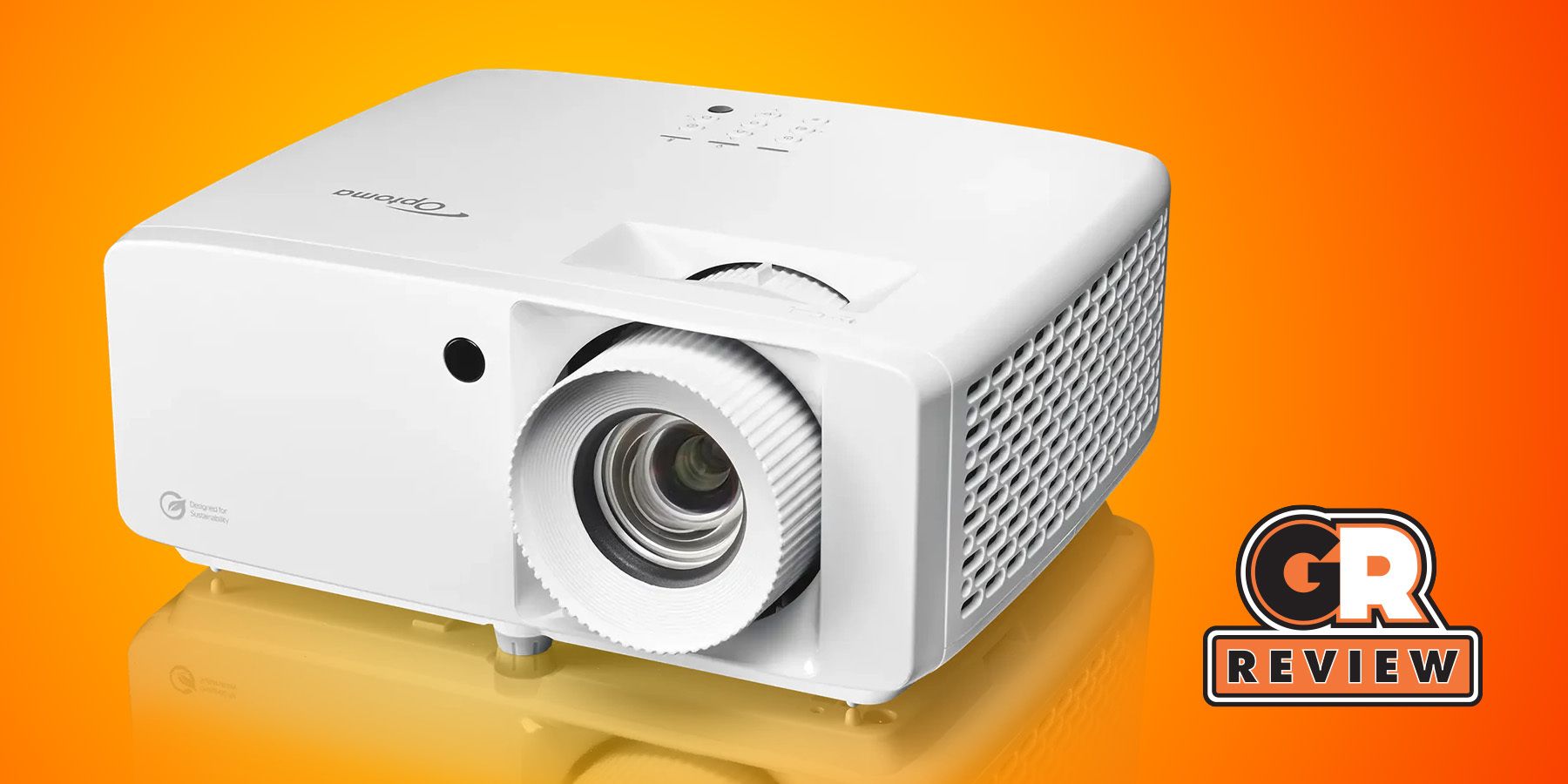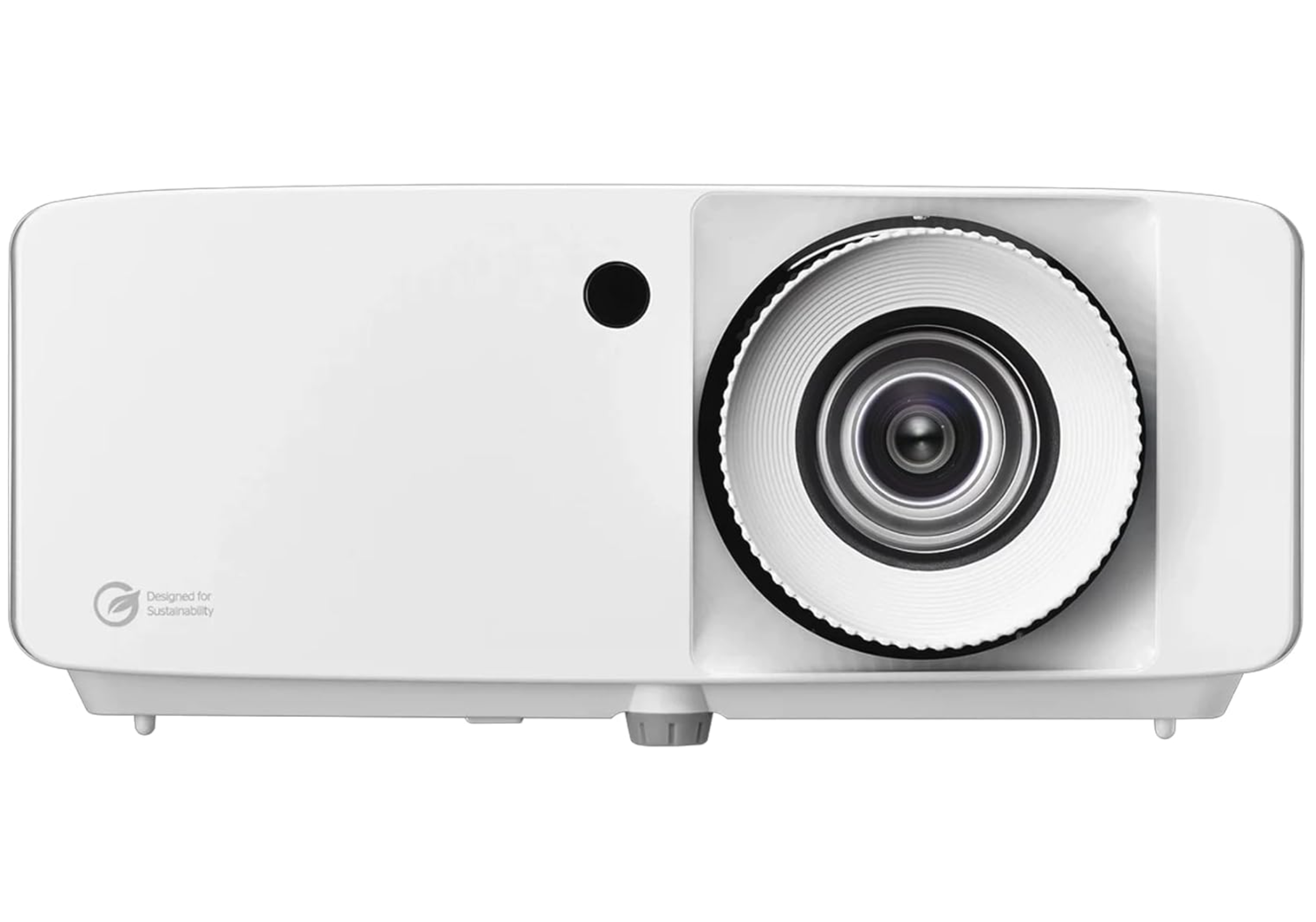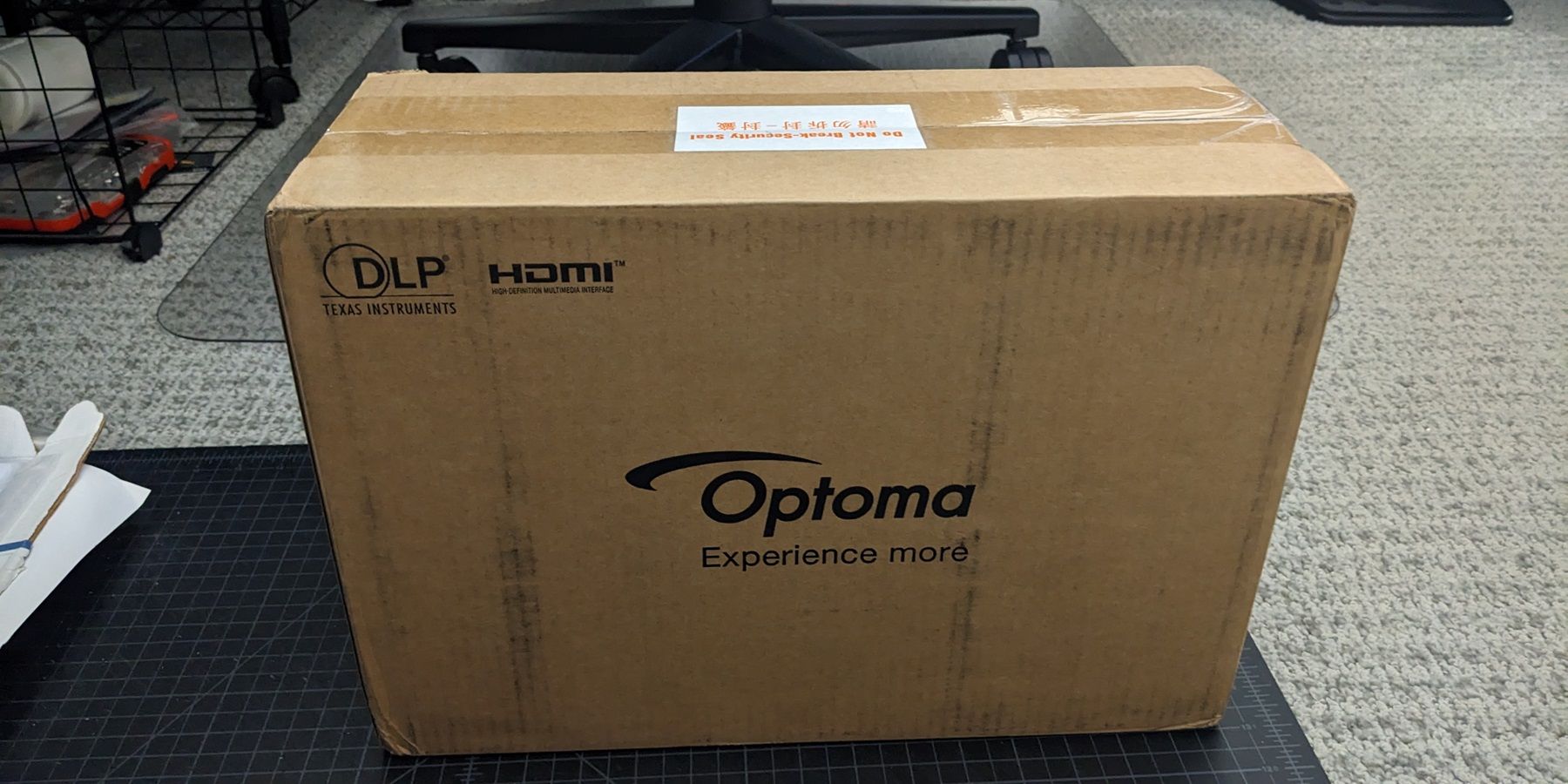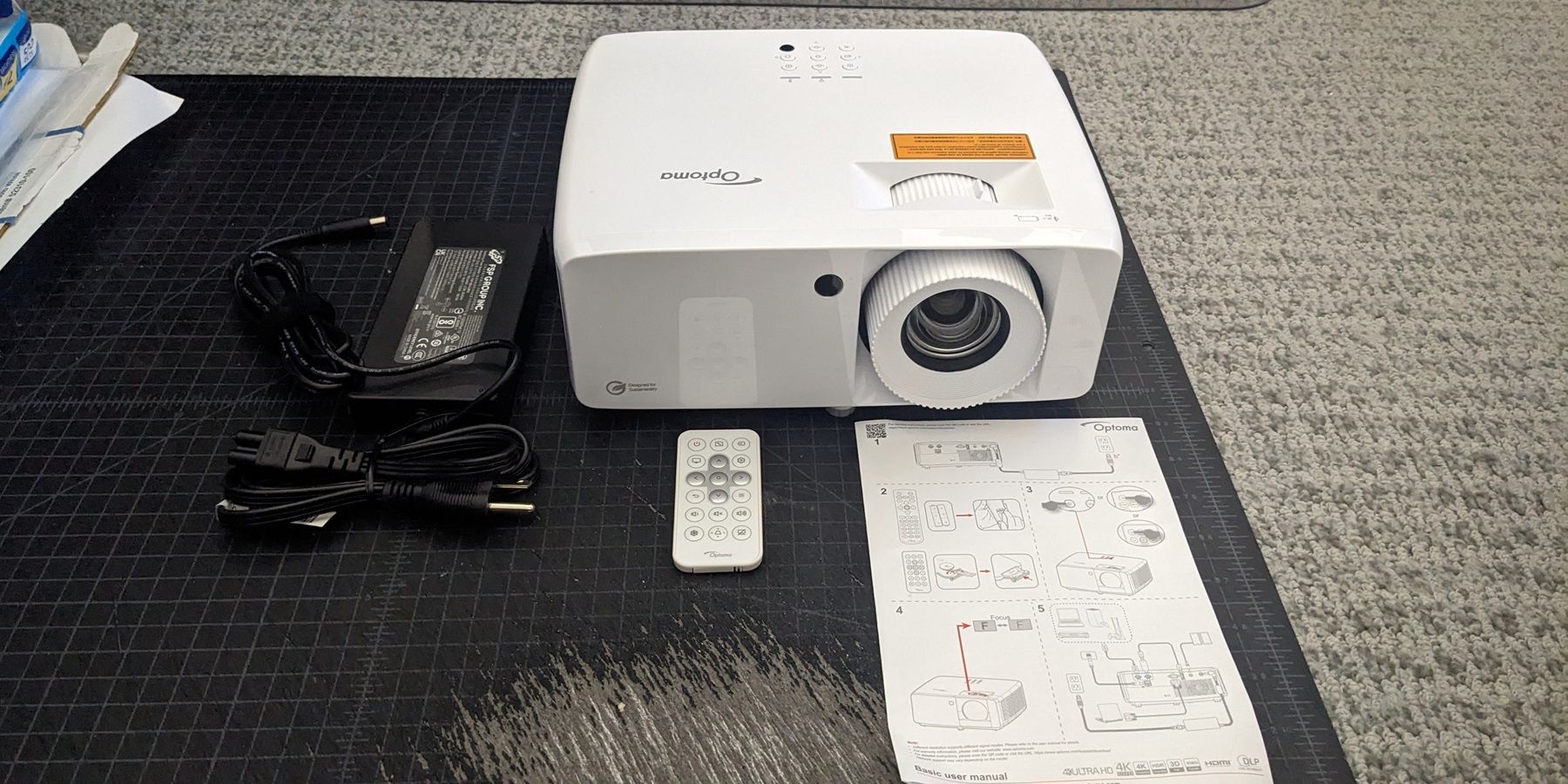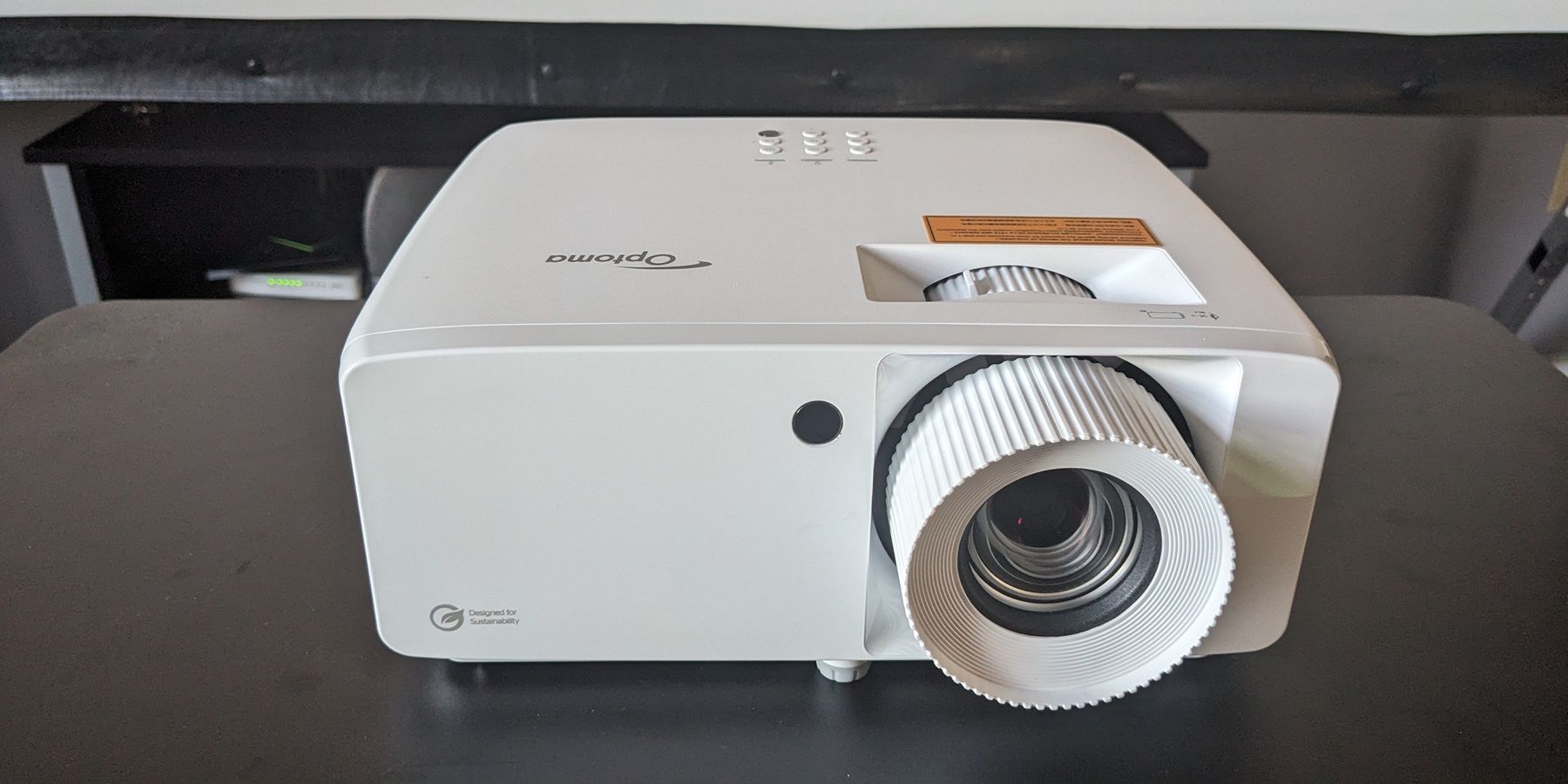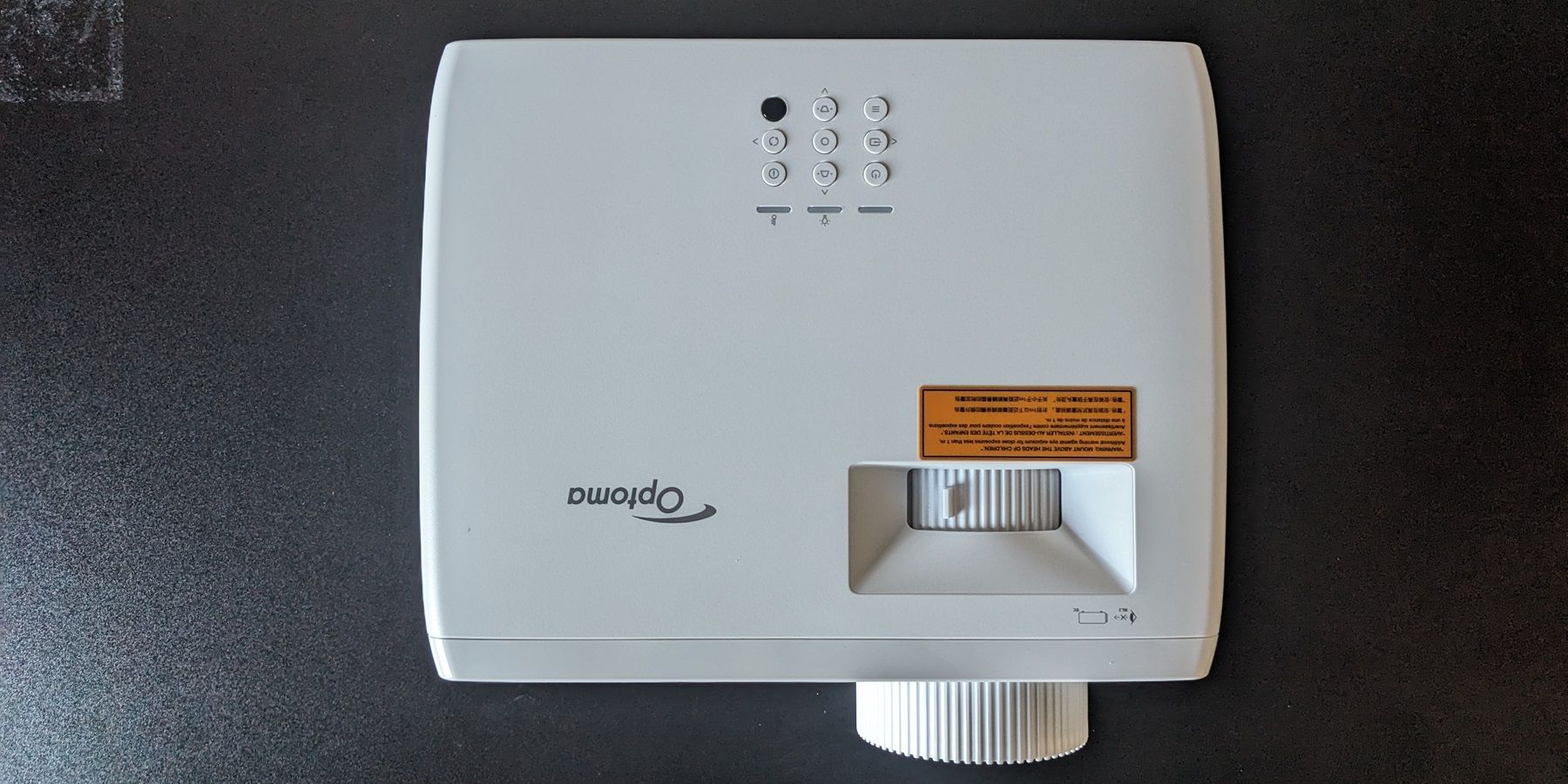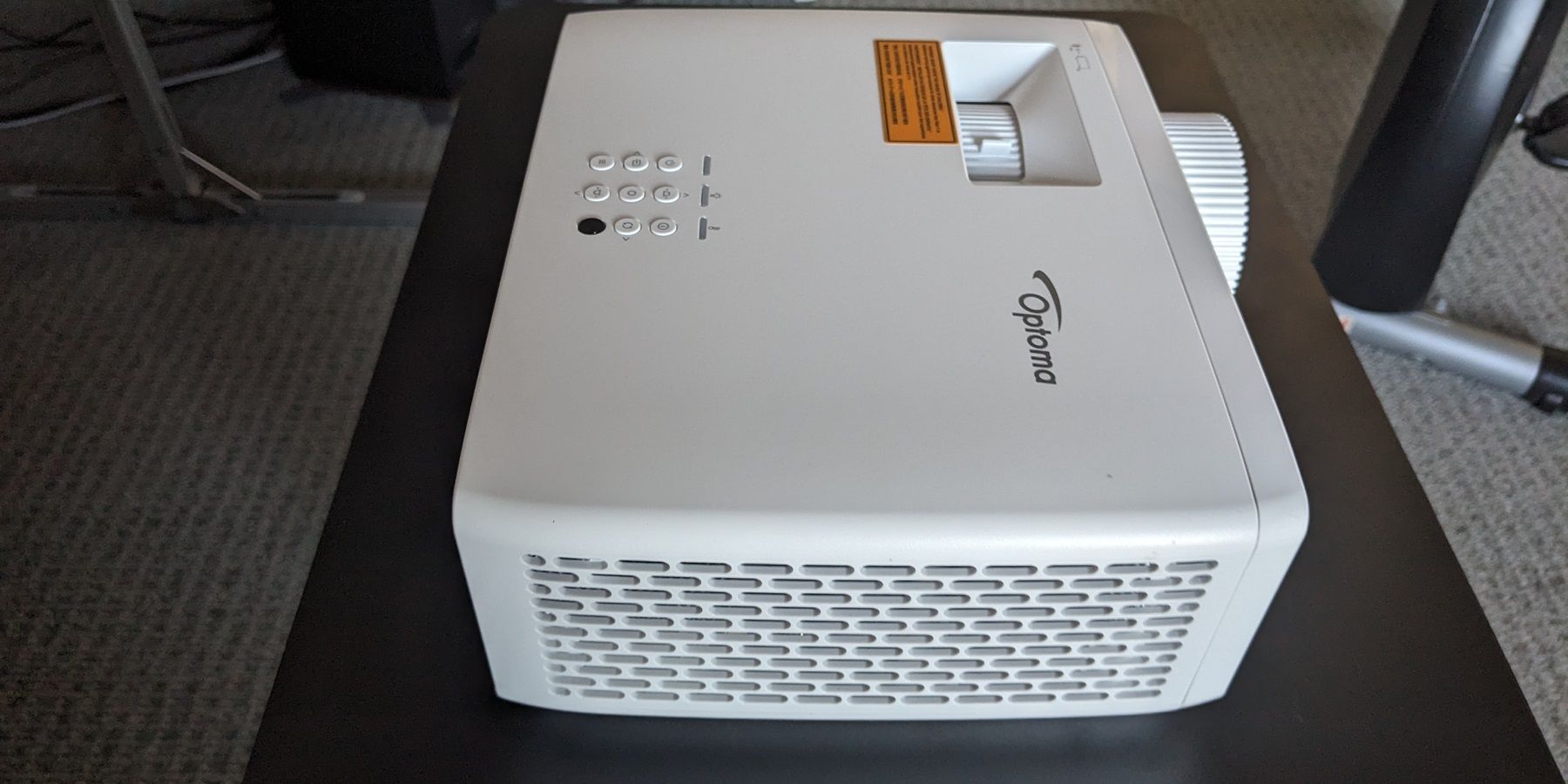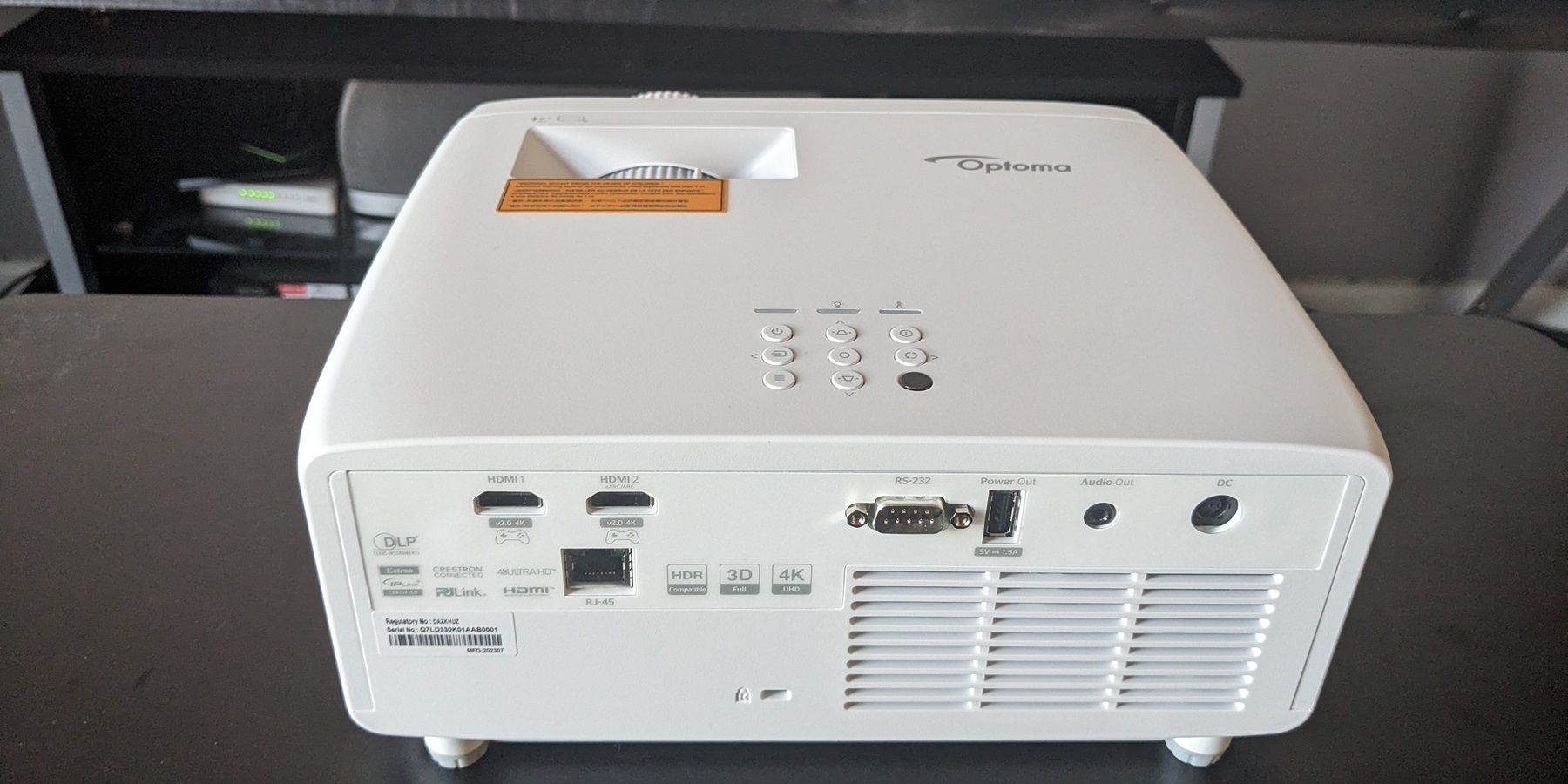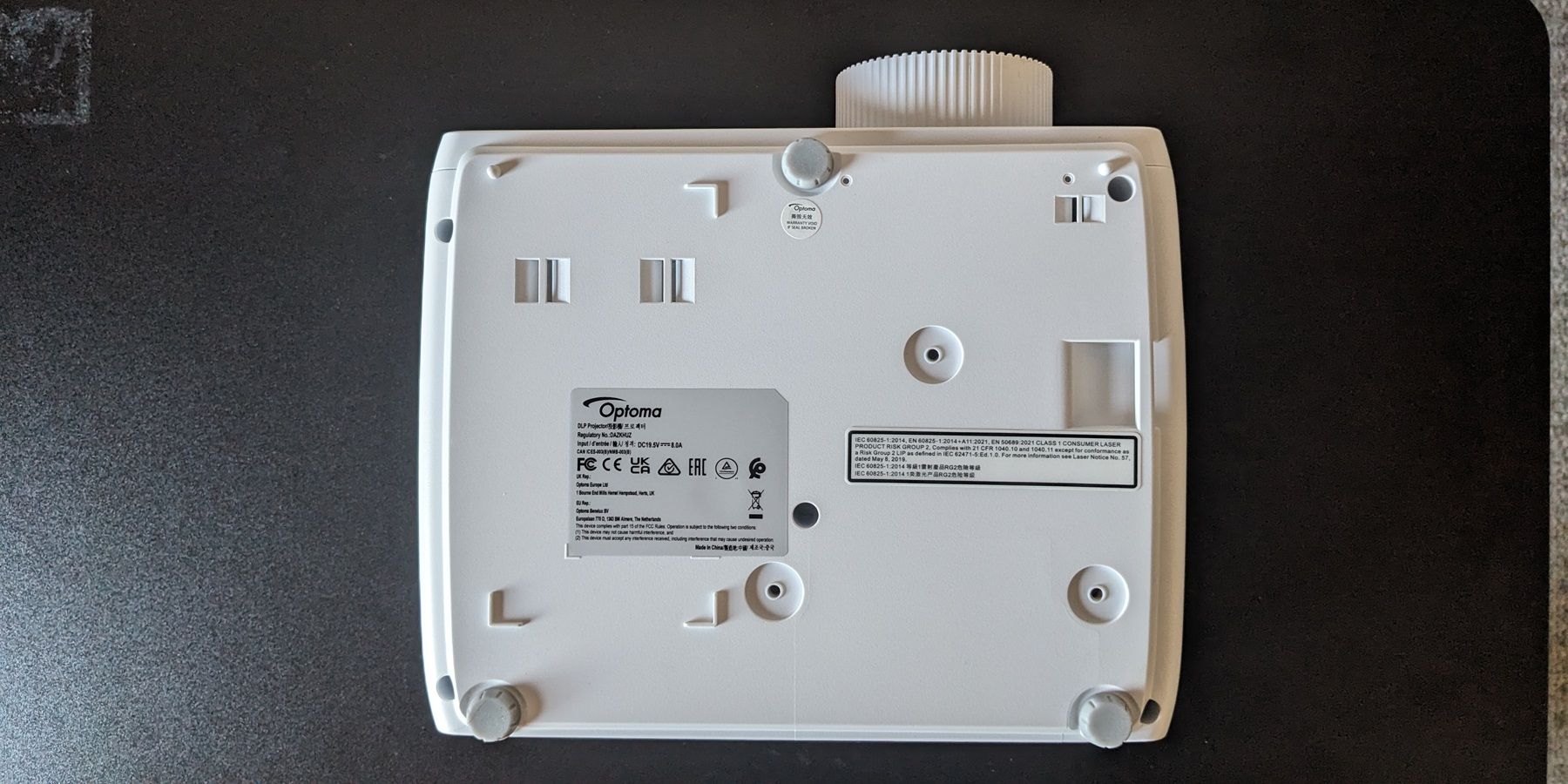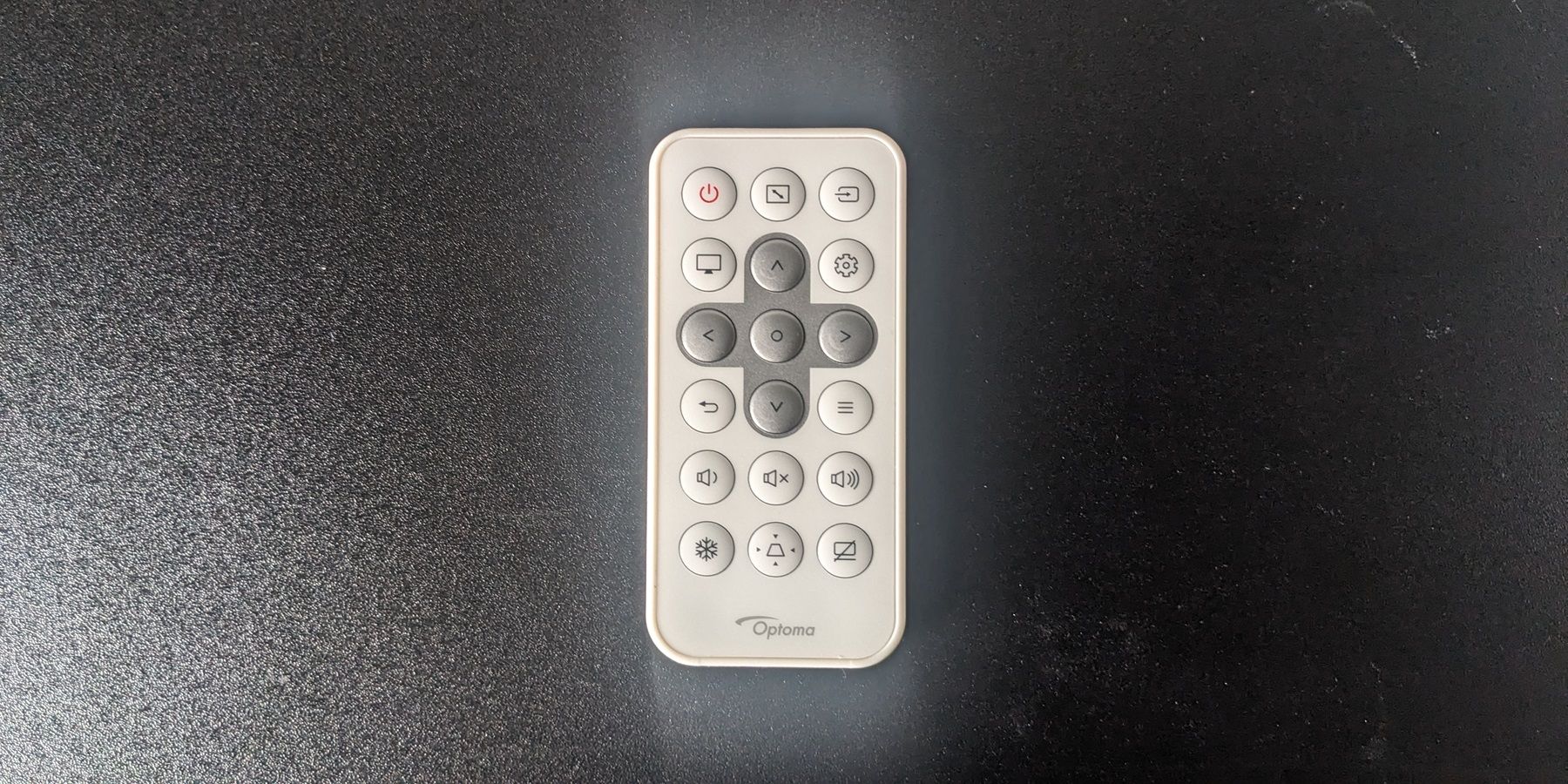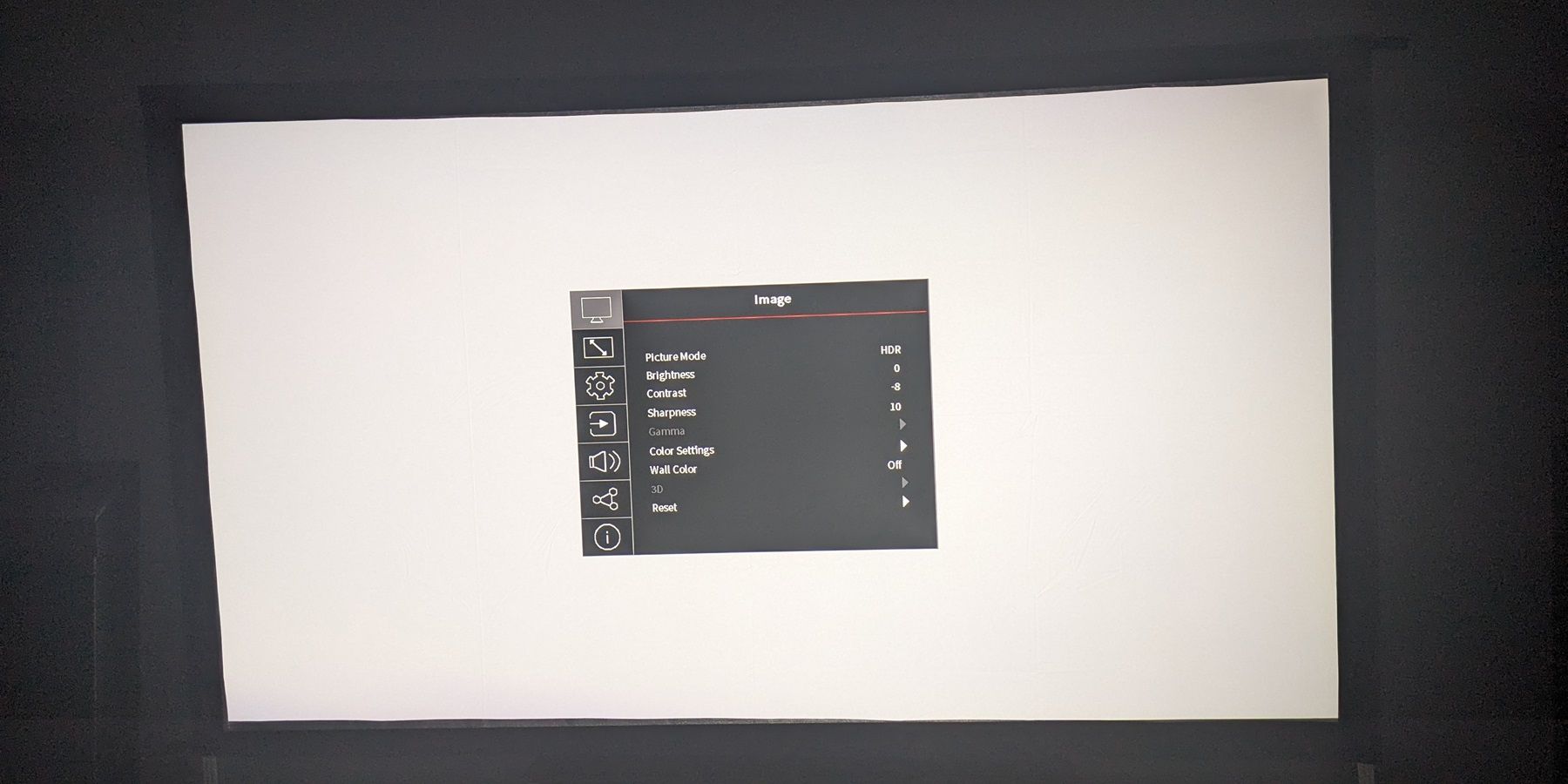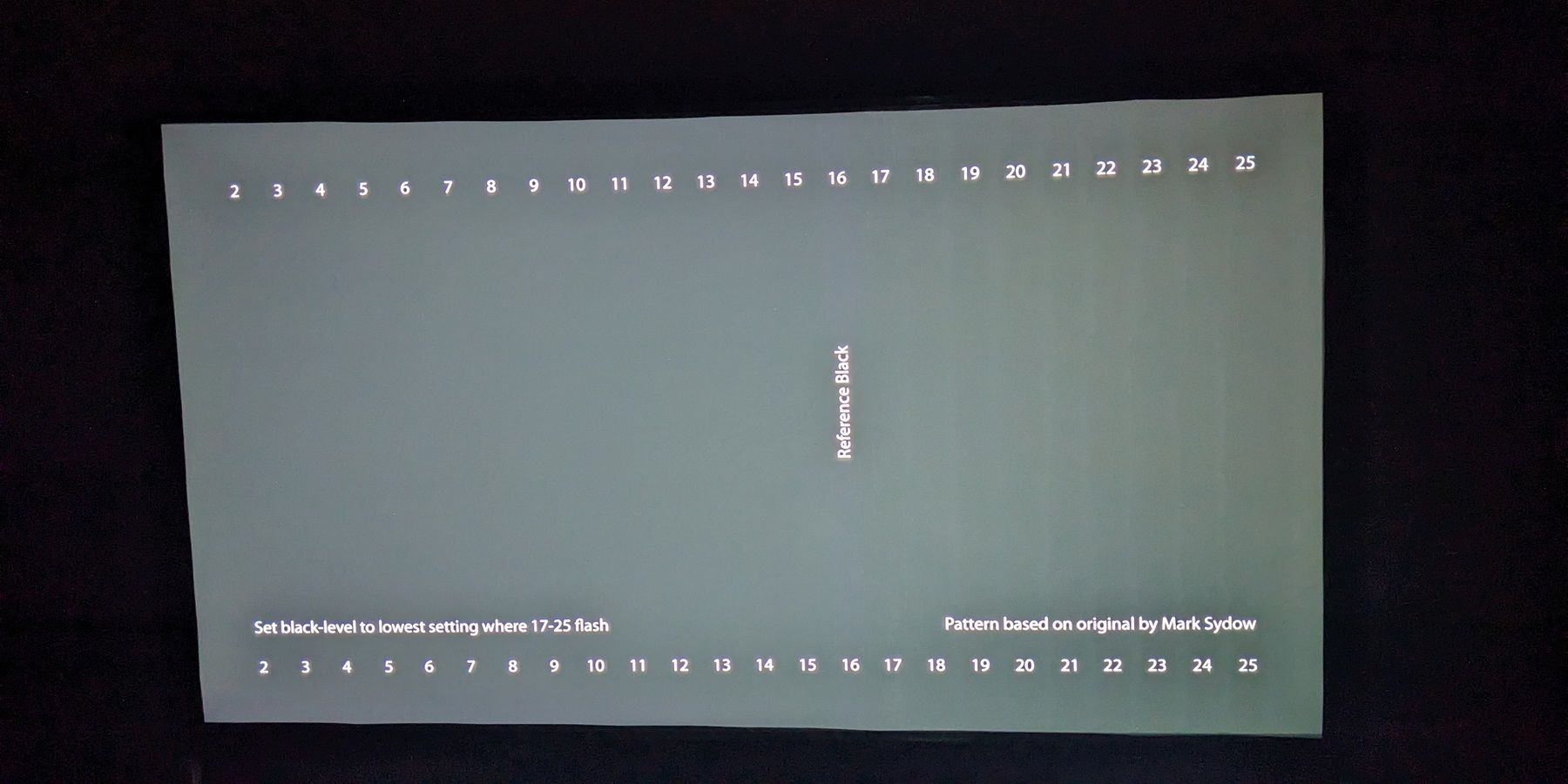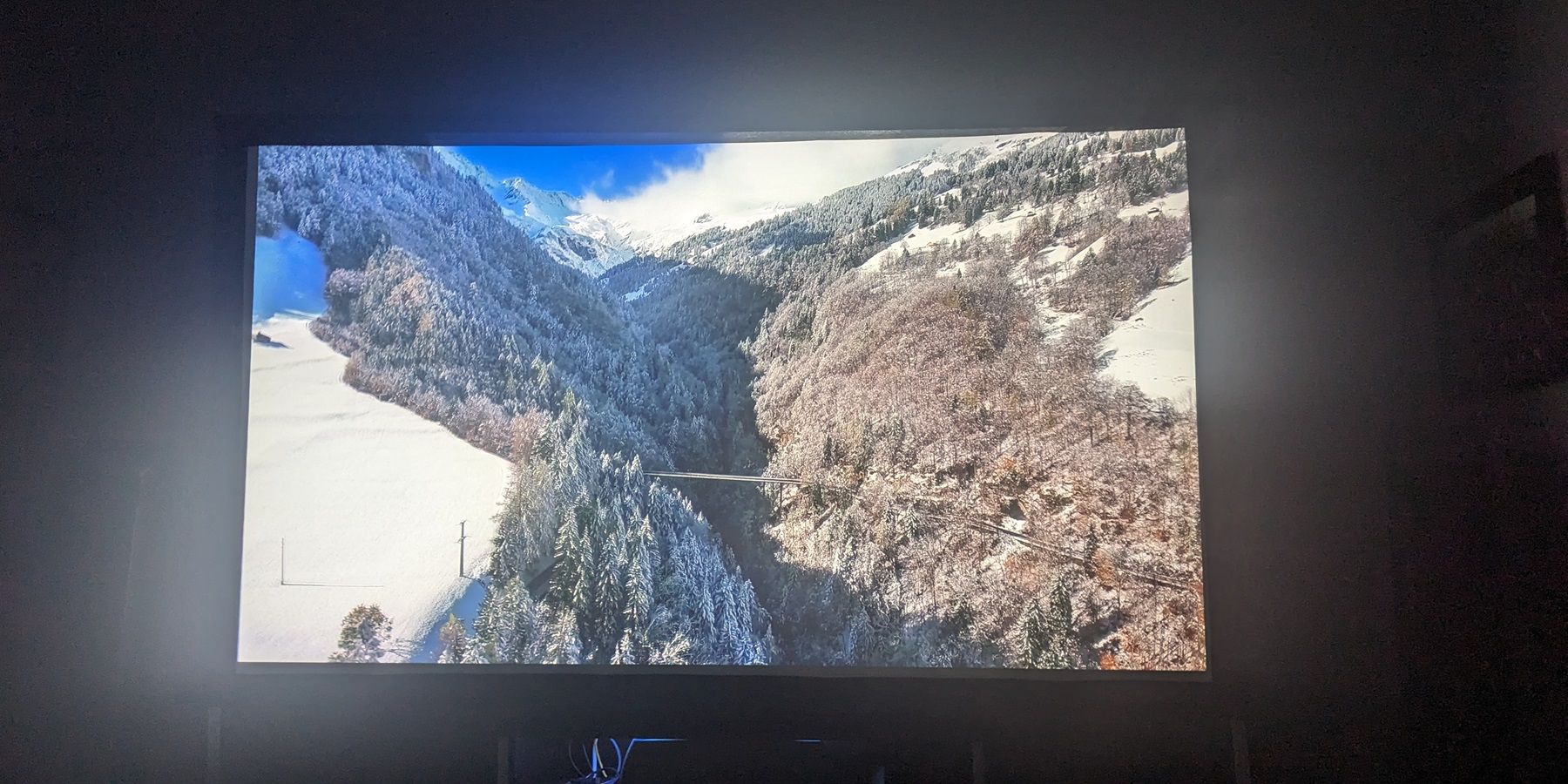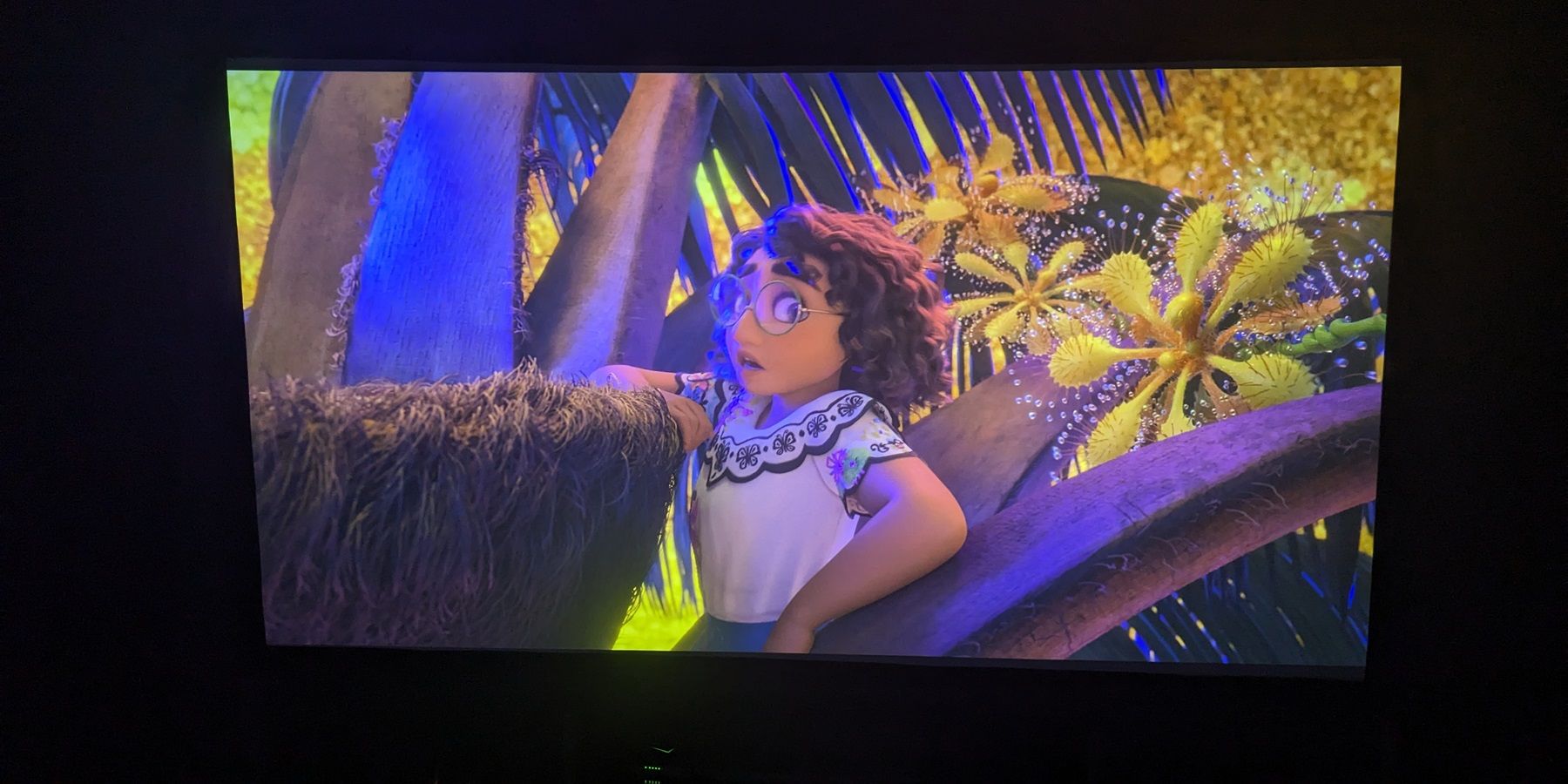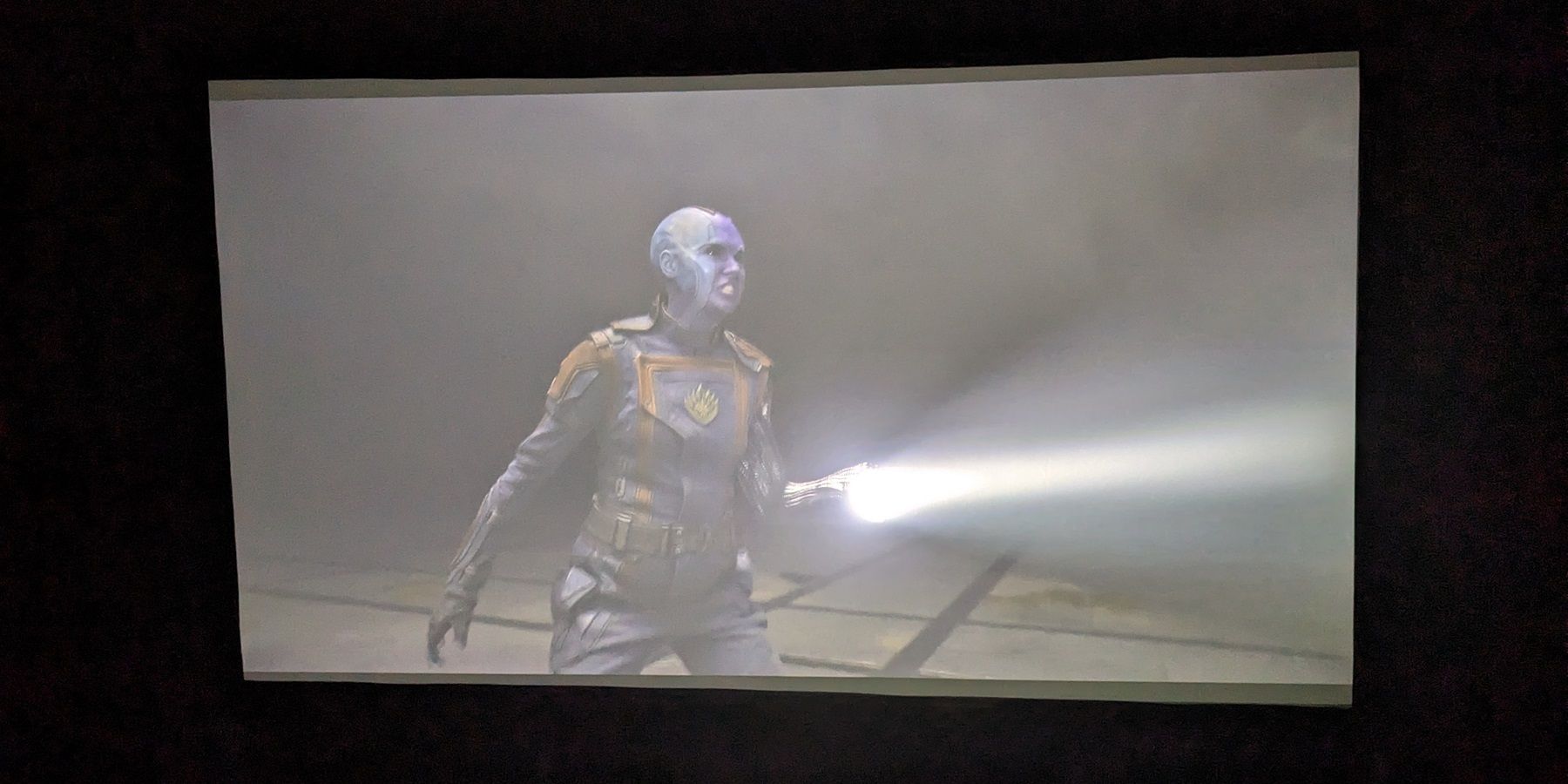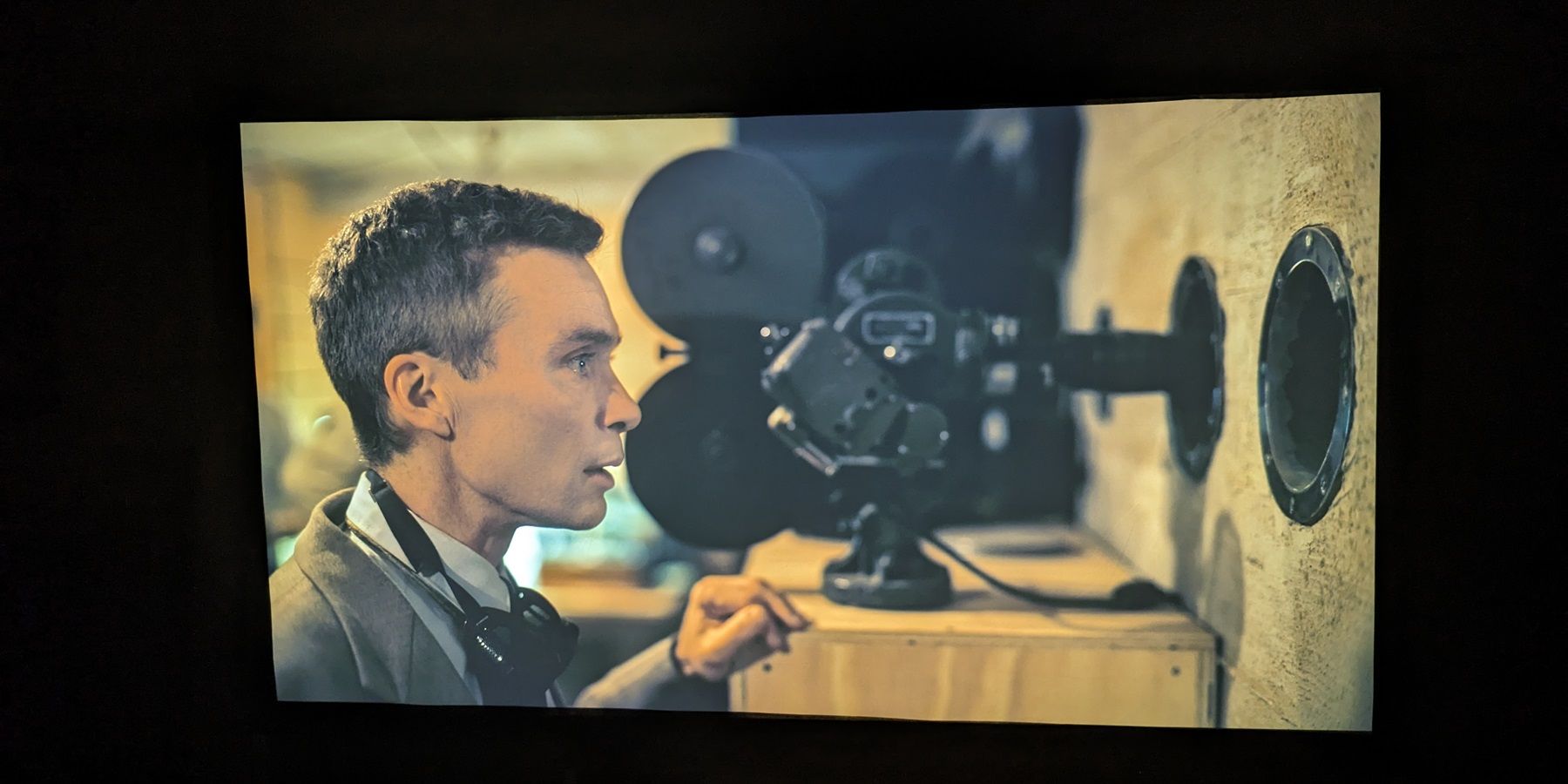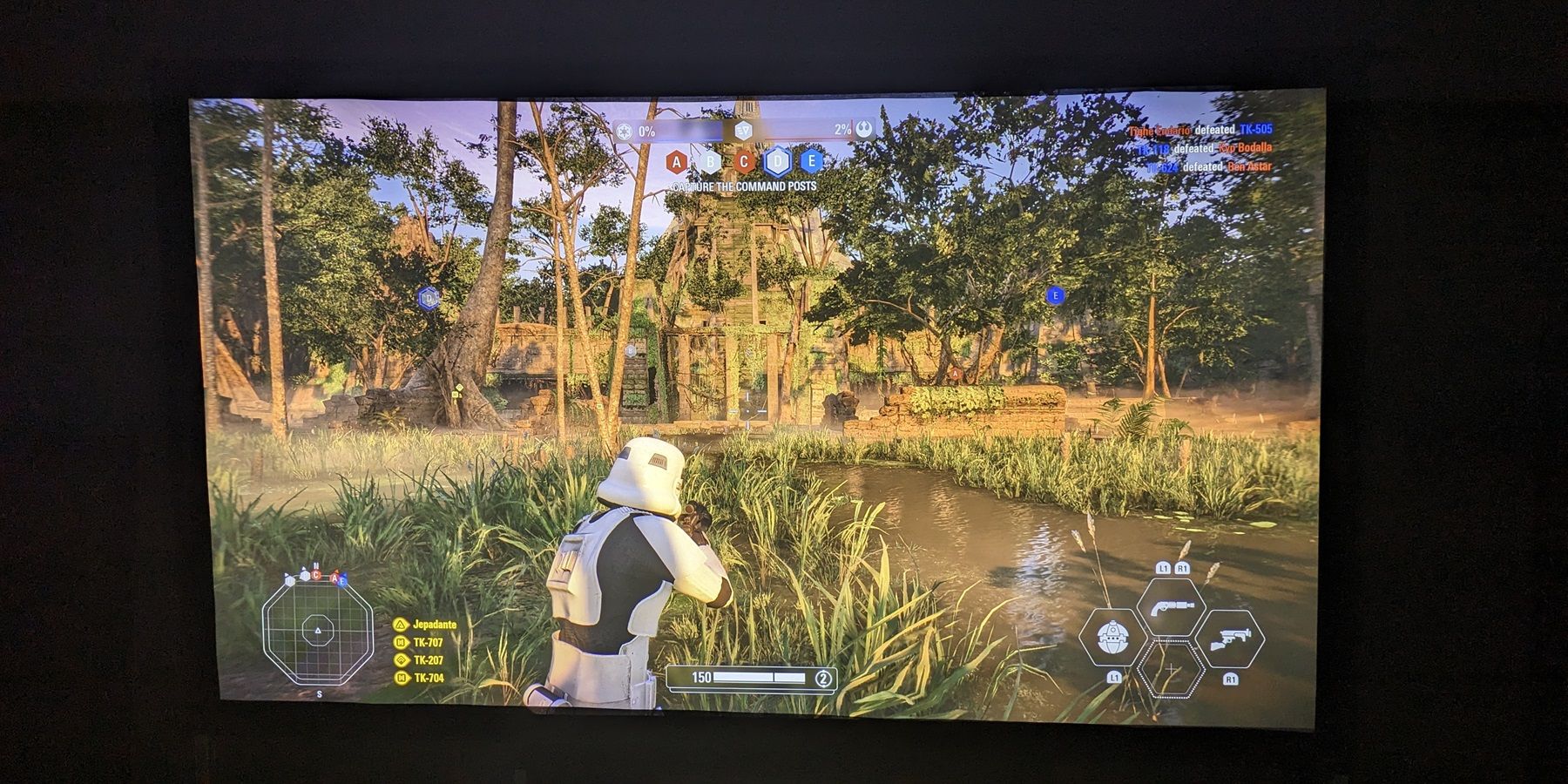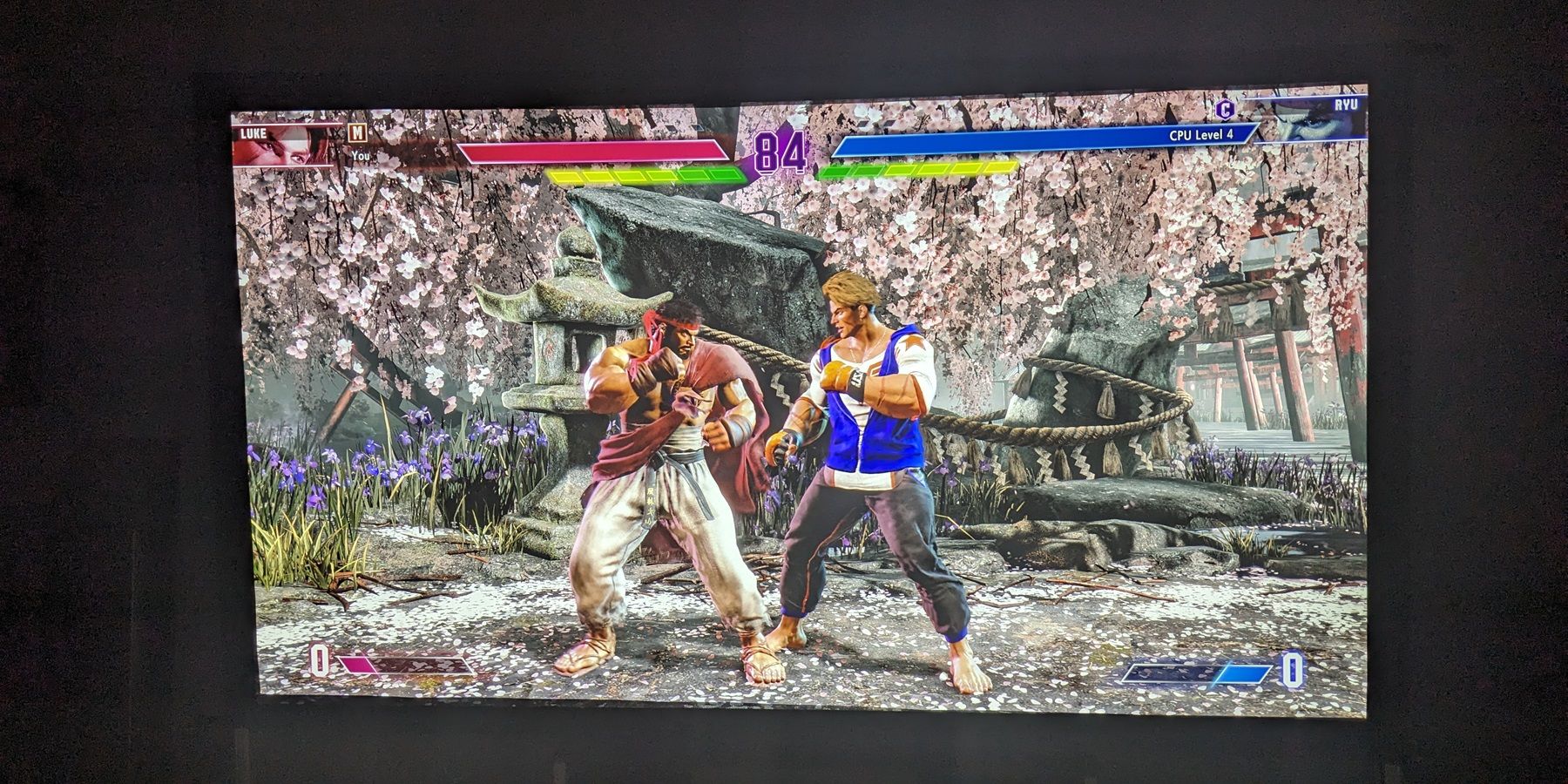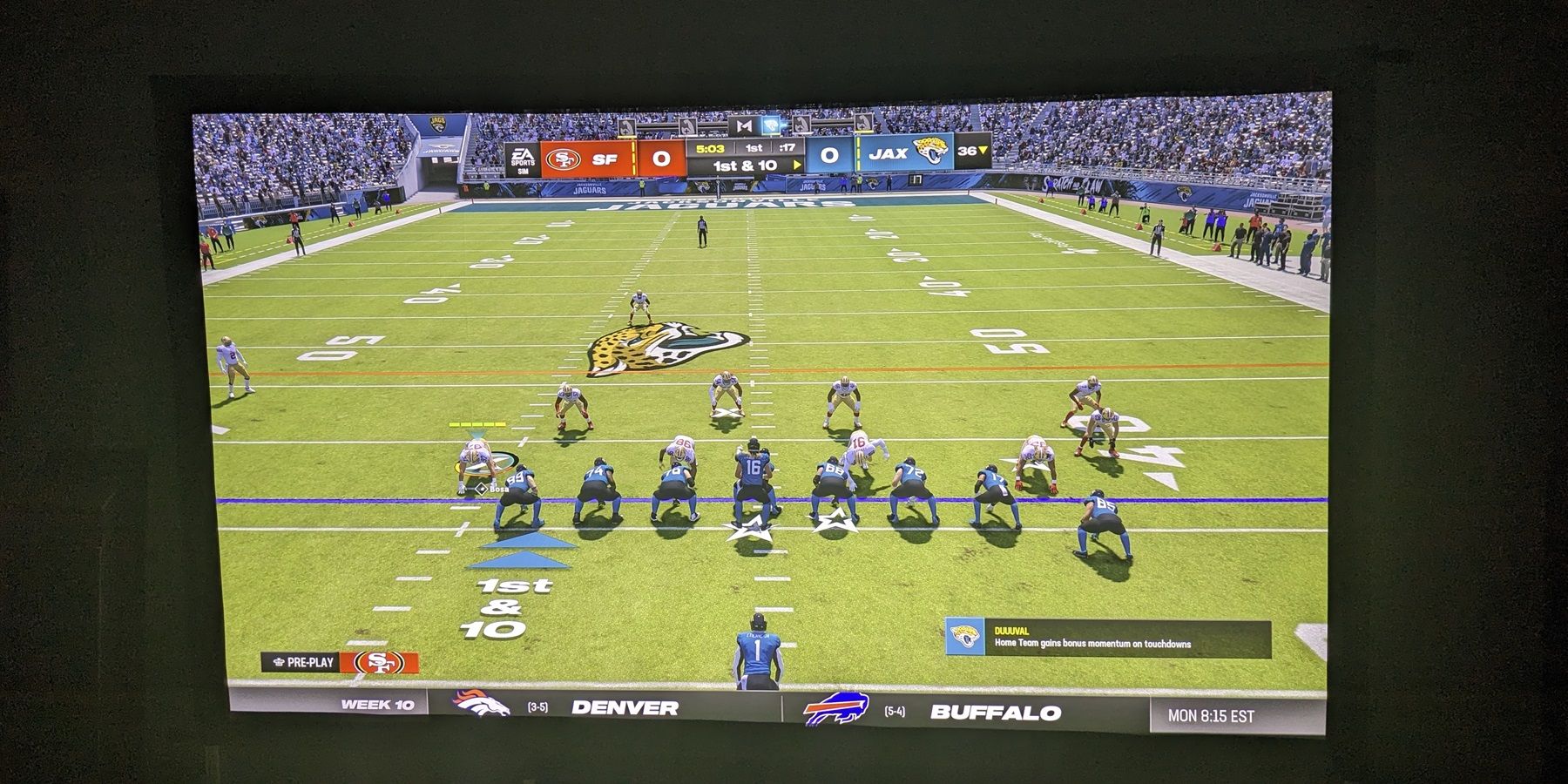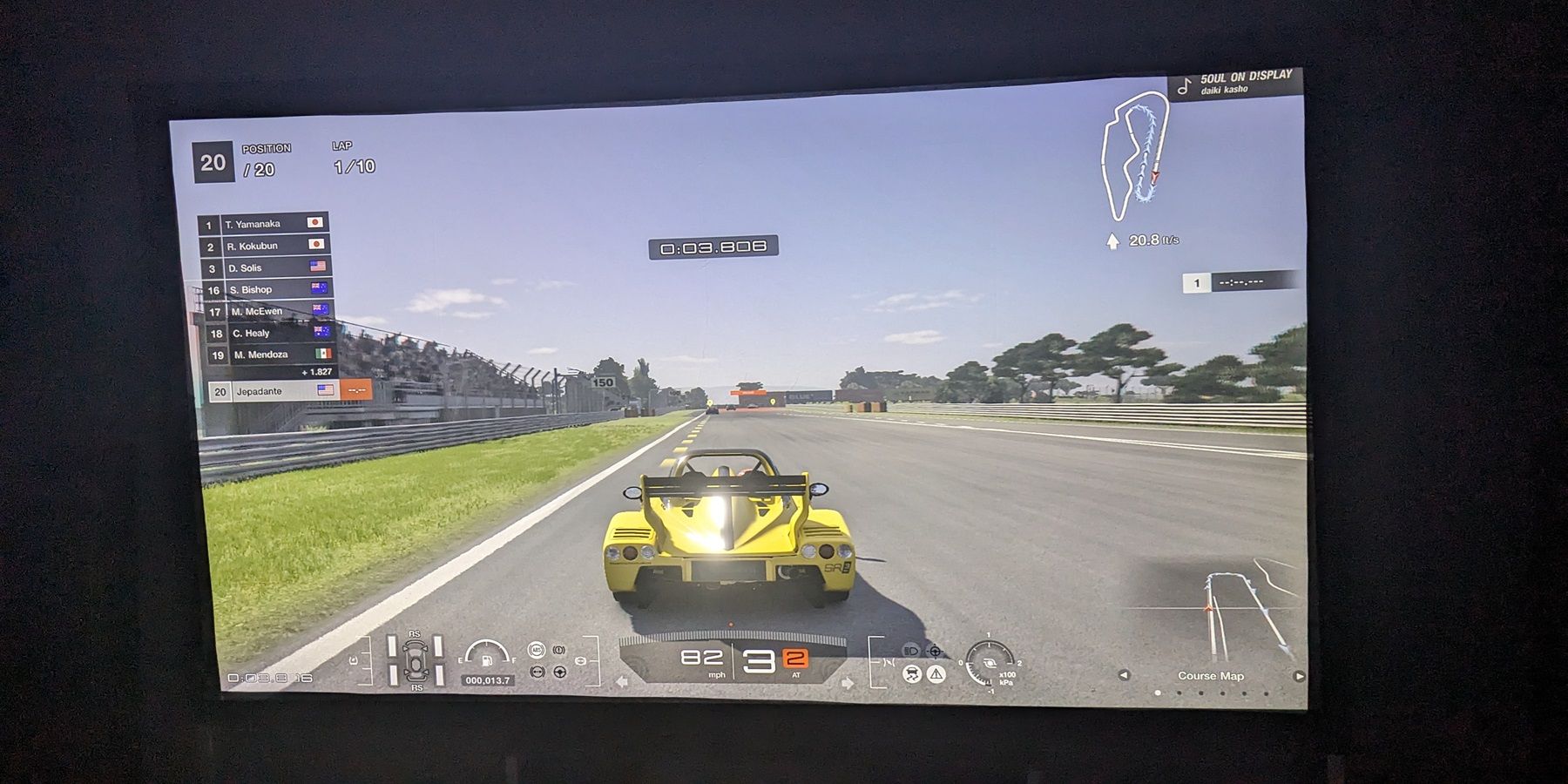Quick Links
Projectors are often a tough sell to competitive gamers who rely on smaller, high refresh rate monitors. Although projectors can produce cinema-sized images, they have a reputation for unacceptable latency and being impractical for heavy usage. In recent years, manufacturers like Optoma have targeted gamers with models that have long-lasting bulbs and gaming modes with improved responsiveness. The Optoma UHZ66 is a new compact 4K DLP projector that makes it as painless as possible for gamers to transition from TVs and monitors.
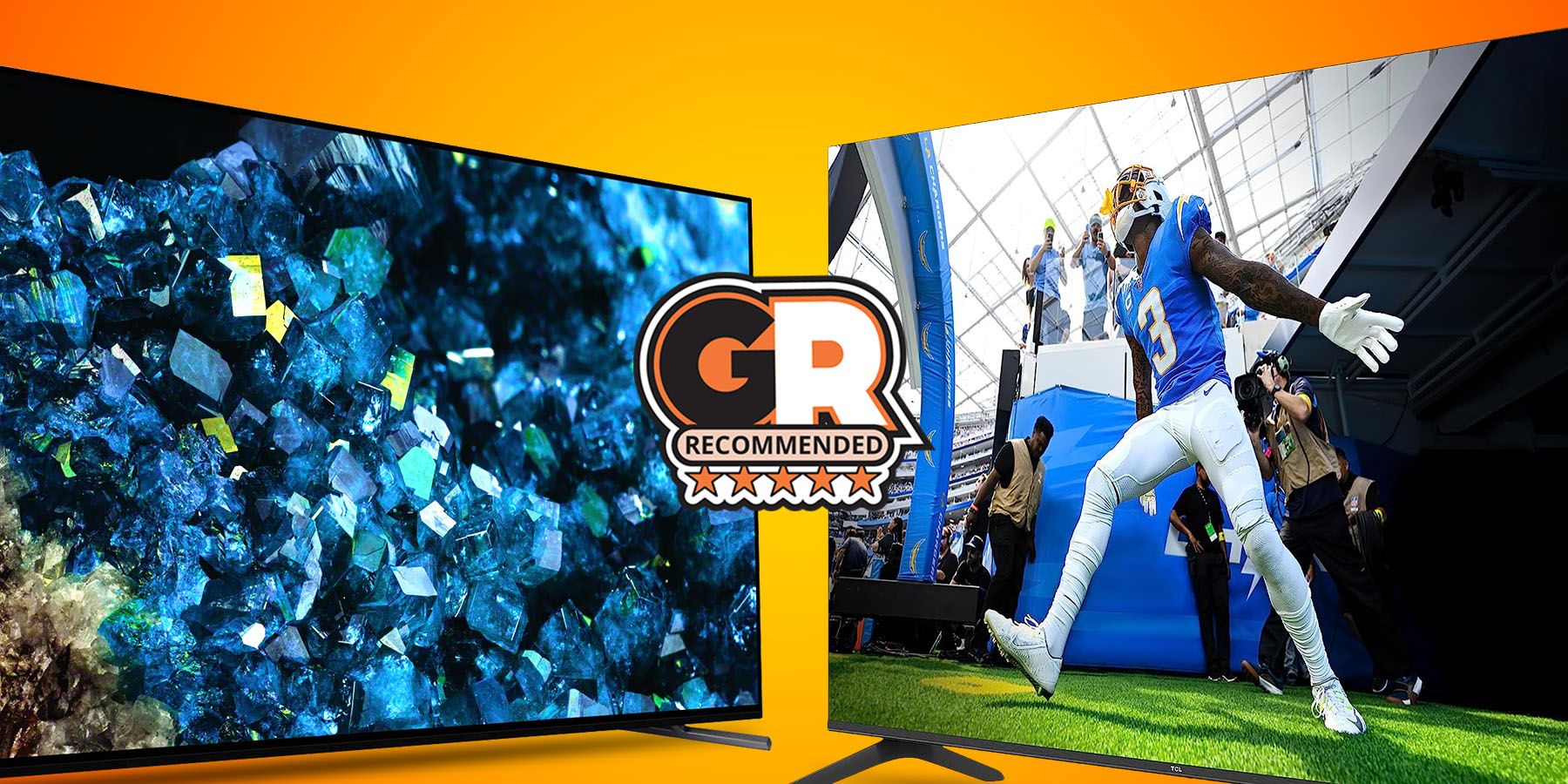
The Best Gaming TVs in 2024
Looking for a gaming TV that can handle long sessions without trouble? Check out Game ZXC’s picks for the best gaming TVs in 2024!
The Optoma UHZ66 isn't only a gaming projector since it supports content at 24 frames per second and 3D signals for a movie theater experience. While smaller and more portable alternatives exist, they struggle to match the functionality and features of user-friendly TVs. Optoma was generous enough to provide GameZXC with a review sample of the UHZ66 to see how it performs as a giant gaming display.
Contents of Package
The Optoma UHZ66 ships to buyers in a compact brown box, immediately hinting at the projector's smaller size.
There isn't much wasted space inside the packaging, and the sides of the UHZ66 are well-protected with cardboard cushioning. Surprisingly, the projector doesn't include a lens cap, but the optics are recessed fairly deep inside the focus ring.
After unpacking the box, buyers will find a quick start guide, an external power supply and cord, and a small remote control.
Design
The white Optoma UHZ66 checks in at 10.79 x 8.5 x 4.49 inches, confirming that it's a downsized version of competing DLP and LCD projectors. The external power supply helps to limit the footprint of the projector further. Optoma's model starkly contrasts with portable projectors like Samsung's The Freestyle, which occupies even less space with its cylindrical form factor. However, these affordable ultra-portable projectors usually max out at 1080p resolutions.
On the mostly flat top side of the UHZ66 is a slider to adjust its 1.6x zoom lens and small buttons to navigate menus and make basic image adjustments. Some LED lights give information about the projector's power, lamp, and temperature status.
To combat some of the inevitable heat generated by the UHZ66's powerful lamp, large vents are scattered on several sides of the projector.
The situation is relatively straightforward on the back of the UHZ66, with a pair of HDMI 2.0 ports as the main attraction. ARC/eARC is available on the second port, allowing the projector to process audio and output it to other components in modern gaming or living rooms. The UHZ66 doesn't have Wi-Fi, so buyers must use the ethernet port to update the firmware. Since the projector also lacks native smart apps, buyers can power a streaming stick with the USB-A power connector but will still need to connect it to an HDMI port.
The bottom of the UHZ66 features a trio of adjustable feet, making it easier to aim the projector directly at the screen.
There is no debate that the small remote bundled with the UHZ66 is disappointing. The projector is affordable among high-brightness 4K contenders, but the remote resembles an accessory accompanying the cheapest HDMI switch. Optoma crams many functions onto the credit-card-sized remote, but finding the right button in the dark is challenging without LED backlighting or voice commands.

The Best Smart Lights in 2024
Smart lights are easy to control and add lots of fun to any living or gaming room. With so many options, which lights should you purchase first?
Installation
How a projector fits into an existing home theater is always a cause of concern for consumers accustomed to flat-panel TVs. Ideally, the UHZ66 will be ceiling mounted to keep noise levels at a minimum and reduce the chances of people and objects interfering with its light path. However, cable management becomes an issue, and not all buyers are anxious to drill holes in walls. The UHZ66 is flexible enough for placement on a table in front of sitting positions or behind sofas on high shelves. Still, to fill a 100-inch image, as in this test environment, the projector must be around 10 feet from the screen.
The zoom lens included with the UHZ66 is rather powerful, but the projector requires centering vertically and horizontally with a screen to avoid image distortion. Placement options are more limited without the lens shift available on similar projectors. Installers can utilize the three feet on the bottom of the UHZ66 to fine-tune its placement and keystone to keep the edges of images even. Unfortunately, keystone does reduce image sharpness slightly, so limiting its usage is recommended.
It can be somewhat time-consuming to find the best spot for the UHZ66 and adjust it to achieve a correctly proportioned image. Fortunately, the projector requires a few other tweaks before buyers can game or watch movies. The focus ring around the lens must usually be employed to increase an image's sharpness. Users will also want to ensure they have selected the correct projector orientation in the UHZ66 menus. While there, changing several settings related to HDMI-CEC, audio output, and power consumption is possible.
Considering the amount of HDR content currently available, making image adjustments in modes that do not affect HDR is becoming less critical. Even so, in Cinema Mode, which balances brightness, contrast, and detail levels, it only took slight changes to match a typical test pattern. Fewer controls are available when an HDR image is displayed, but many gaming consoles, media players, and Windows PCs have calibration menus to match a display's peak brightness.
Performance and Usage
In truth, the 4K DLP chip used in the UHZ66 and similar projectors relies on a 2716x1528 arrangement of mirrors. Through advanced video processing, a pixel-shifting process effectively enhances their resolution to 4K. Regardless, few buyers complain about the quality of images produced by 4K DLP projectors compared to 4K monitors or TVs.
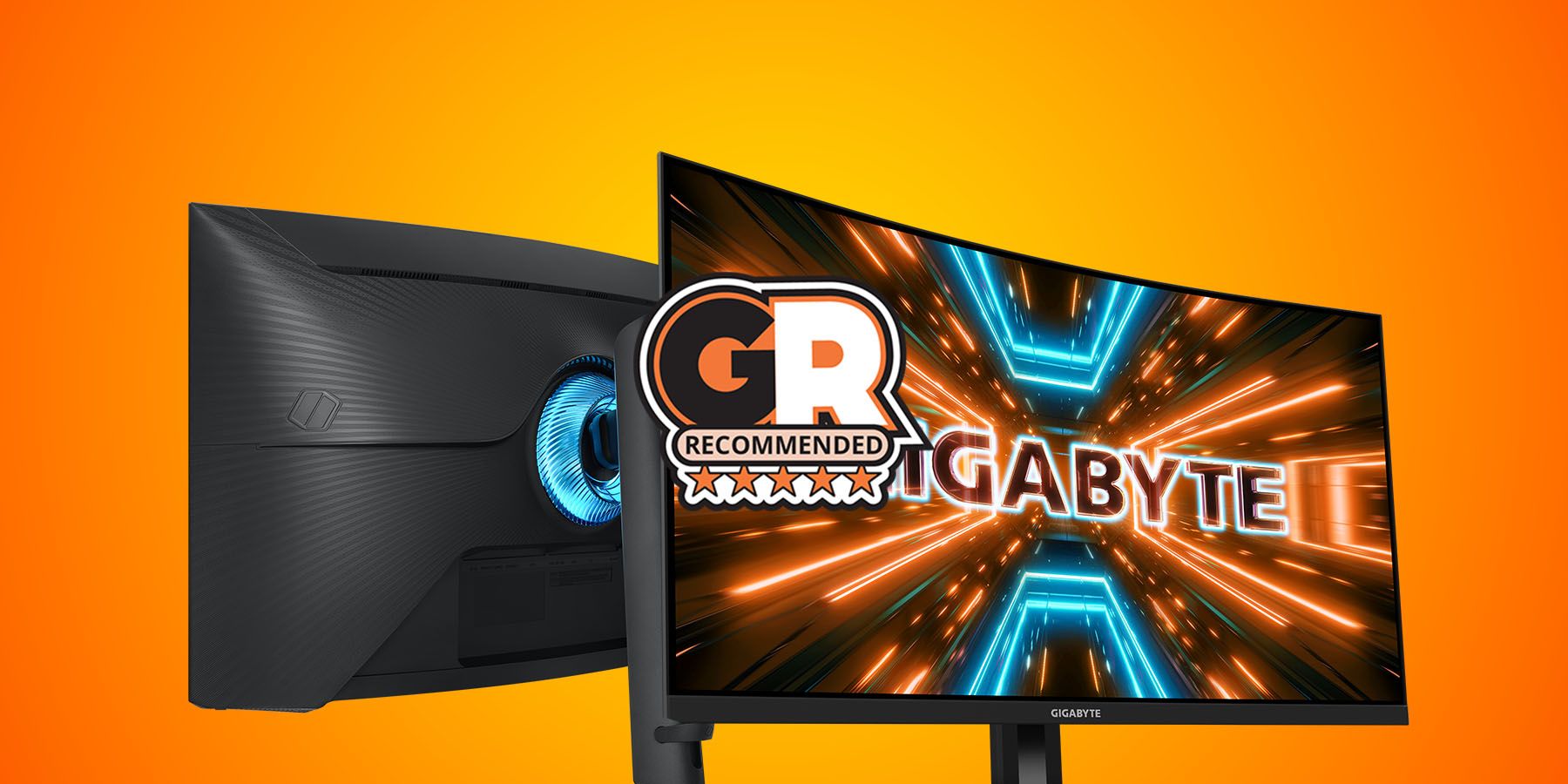
The Best Curved 4k Gaming Monitors for 2024
This guide highlights some of the best curved 4k gaming monitors available now that gamers will want to check out.
Other factors like brightness and black levels also affect how well viewers discern details in movies and games. As far as brightness, the UHZ66 excels, pumping out 4,000 lumens, which is sufficient to compensate for light leaking into brighter rooms. In practice, the projector's 500,000:1 contrast ratio doesn't quite impress in the same way but performs at the level of many consumer-grade DLP projectors.
The UHZ66 shines best in bright scenes with fast motion, which also has obvious benefits for gaming. For nature videos or movies, the level of detail in images is impressive, and when cameras pan, there is little or no jittering.
Animated features further demonstrate the HDR10 capabilities of the projector with a wide color palette, even if overall brightness isn't dramatically increased.
Darker scenes are more challenging for the UHZ66, where some fine details become lost in poorly lit backgrounds. The projector offers a Dynamic Black option, which adjusts lamp brightness to reduce the crushing of blacks. However, when considering this feature on Optoma projectors, many viewers prefer to leave Dynamic Black off, as the constant changes in brightness can be jarring.
The appeal of a projector is the ability to turn a living room into a cinema, which is especially impactful with a film like Oppenheimer. Witnessing a nuclear bomb explode doesn't have the same effect on a smaller TV as on a 100-inch or larger projector screen. The UHZ66 performs well enough in movies with a mix of dark and bright scenes to make heading to a movie theater an unnecessary inconvenience. Home cinema buffs will also be happy that the projector plays nicely with content at 24 frames per second
Unlike most TVs and many projectors currently, the UHZ66 can display 3D movies and works with consoles and televisions that still embrace the format. Buyers will need to purchase appropriate glasses, but with 3D still relevant in cinemas, the projector is prepared for any 3D Blu-ray resurgence.
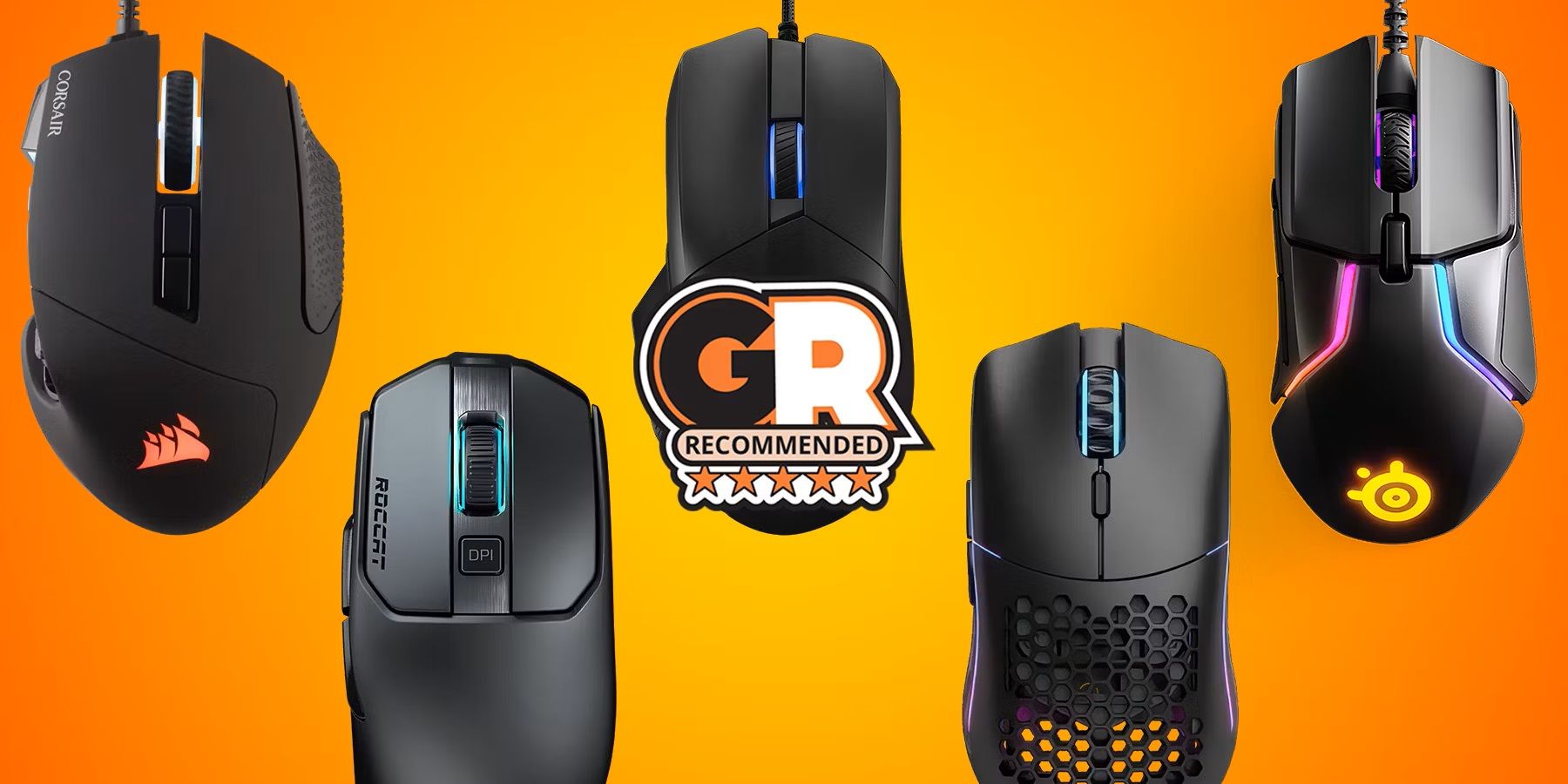
What Gaming Mice Do The Pros Use?
An esports competitor needs to use the best gear to stay on top. Which gaming mice do some of the top pros rely on?
Gaming on the UHZ66
Optoma also focuses on gamers with the UHZ66, flexing the projector's compatibility with 240 Hz refresh rates at 1080p resolutions. The lack of HDMI 2.1 prevents high-refresh-rate gaming at 4K, but esports pros accustomed to 1080p monitors can now compete on much larger screens.
Of course, the average gamer would probably rather play first-person shooters at 4K, even at 60 Hz. The PS5 had no issues working at this resolution with the UHZ66, even if the projector was a bit slow in locking in video signals. Being immersed in a virtual world in a way that's not possible on most TVs, gaming on a 4K projector is a unique experience.
It's possible to execute a flurry of combos in Street Fighter 6 without any of the action being lost in blurred motion.
The UHZ66 is also a fantastic display for sports games, allowing gamers to see the entire field without straining their eyes.
Gamers concerned with latency will want to consider activating Gaming Mode and setting consoles and PCs to 1080p at 240 Hz. Unfortunately, this also disables geometrical adjustments like keystone, which is a problem unless the projector is in the ideal position. While motion in games was already smooth at 60 frames per second, Gaming Mode reduces latency to just 4.4 ms and enables players to lock onto targets more rapidly.
The projector can adequately replace a TV if using the UHZ66 daily, thanks to its brightness and 30,000 hours of lamp time. With a reasonably quick startup and power-down sequence, the projector is practical for more than just watching a movie or two a week. Even so, buyers should realize that with a compact form factor, the UHZ66 doesn't have a ton of insulation to reduce fan noise. If placed close to a sitting area, its maximum noise rating of 35 dB is noticeable, and changing power or brightness settings has minimal impact. Fortunately, heat was not as much of an issue even after hours of use.

The Best PC Speakers for 2024
If a gamer looking to complete a new PC setup, these speakers can give a rig the voice it deserves.
While the internal speaker in compact projectors is often overlooked, the 15-watt speakers inside the UHZ66 are decent in a pinch. Listeners can set the projector's audio to Bitstream or PCM modes, even if the difference is difficult to notice. Most buyers will want to route audio to a soundbar or surround sound speaker system, but the UHZ66 also has an analog audio output.
Conclusion
The Optoma UHZ66 4K laser projector aims to win over buyers tempted by increasingly cheaper large flat-panel TVs. An immensely bright and long-lasting lamp allows the UHZ66 to be used daily in rooms that aren't entirely light-controlled. With its Gaming Mode and low latency performance at 1080p/240 Hz, gamers now have the option to compete on a massive screen. Regardless of refresh rate or settings, the smooth motion provided by the UHZ66 benefits action-packed movies or frenetic FPS titles.

The Best FPS Gaming Mouse in 2024
Kick those FPS skills into high gear with some of the best mice that are designed for the job.
Unfortunately, the UHZ66 struggles with dark scenes when people and objects become more challenging to differentiate. Also, despite its compact design, the projector can become quite noisy if positioned near viewers.
The UHZ66 isn't the ideal projector for demanding videophiles, but it excels at handling the wide-ranging content viewed on a living or gaming room display. Thoughtful inclusions like eARC support enable it to reduce wiring and eliminate the hassles of connecting consoles and media players to projectors. Even buyers without the perfect setup for a projector and who find the wow factor of big-screen TVs diminishing should consider the Optoma UHZ66.
Related Products
The Optoma UHZ66 isn't the only projector trying to convince gamers to abandon their gaming monitors. At various price points, some cheaper alternatives boast more portability with 1080p maximum resolutions. If a buyer is willing to invest more, there are larger and heavier projectors with superior contrast.
Best Choice For | Alternate Projector | Price |
|---|---|---|
Portability and 1080p cloud gaming | Samsung The Freestyle 2nd Gen w/ Gaming Hub | |
Fixed installation with improved black levels | Epson Home Cinema 5050UB 4K 3LCD Projector | |
Multiple gaming modes to suit different game genres | BenQ X3000i 4K Gaming Projector |
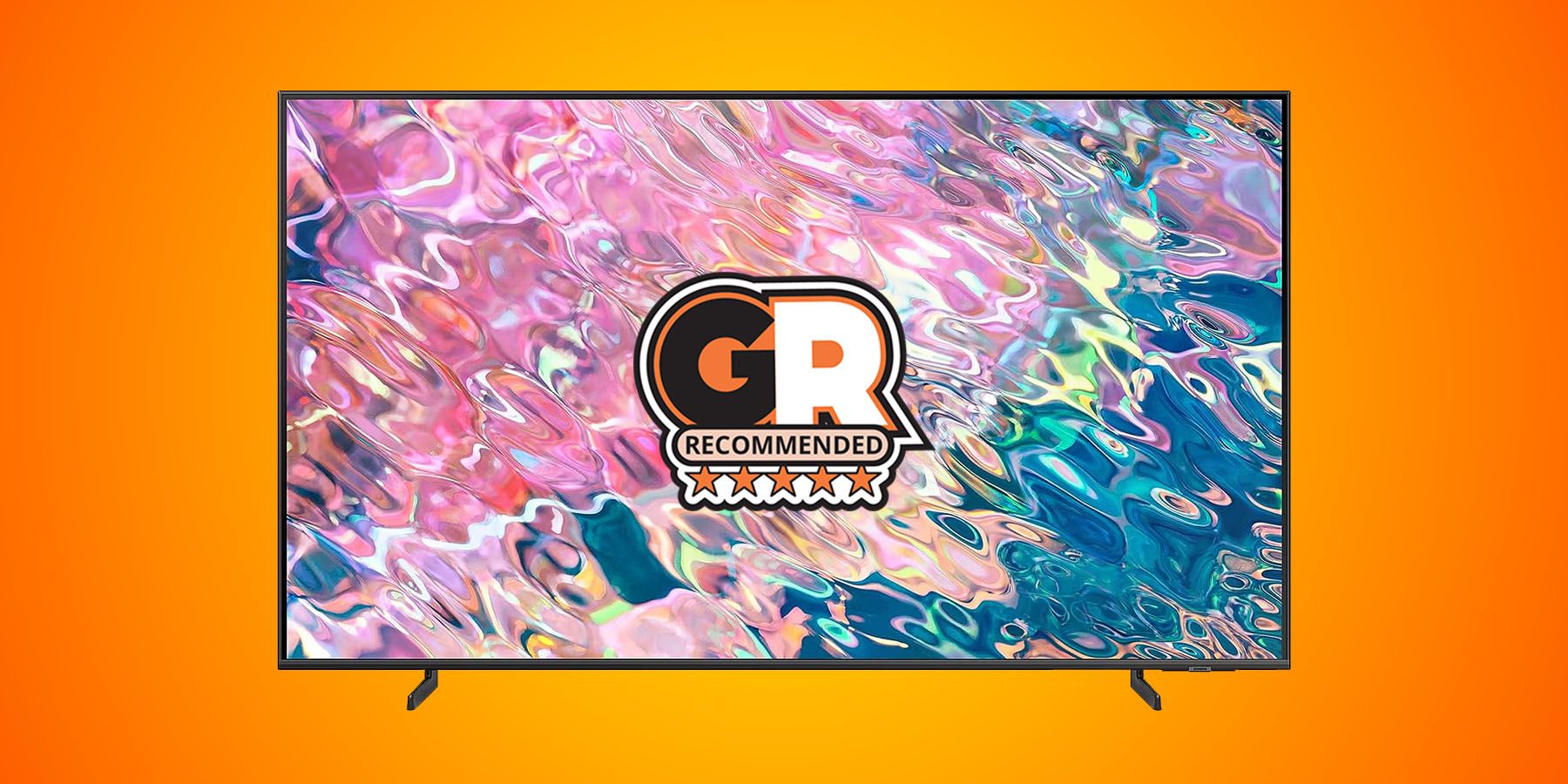
The Best 60-Inch TVs in 2024
Looking for the best 60-inch TVs in 2024? This guide features TV with the best picture quality, performance, features, and price for your needs.
FAQ
Q: Are projectors worth it for gaming?
Projectors can provide a more immersive gaming experience, but not all are ideal for competitive gaming. Buyers looking to use consoles and gaming PCs on large screens should select projectors with gaming modes or acceptable latency.
Q: Do 4K projectors look as good as TVs?
4K projectors can match the visual fidelity of TVs, but projectors tend to lag behind newer flat panels in features. Typically, a similarly priced TV will offer a better contrast ratio and support for higher refresh rate HDMI signals.

